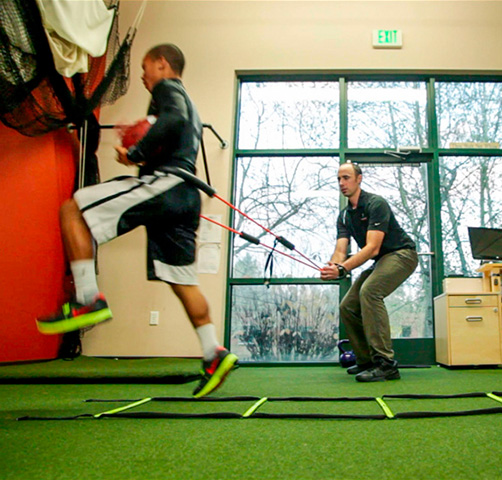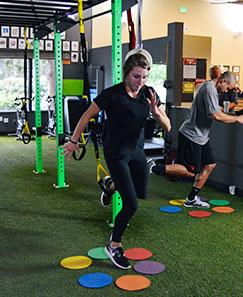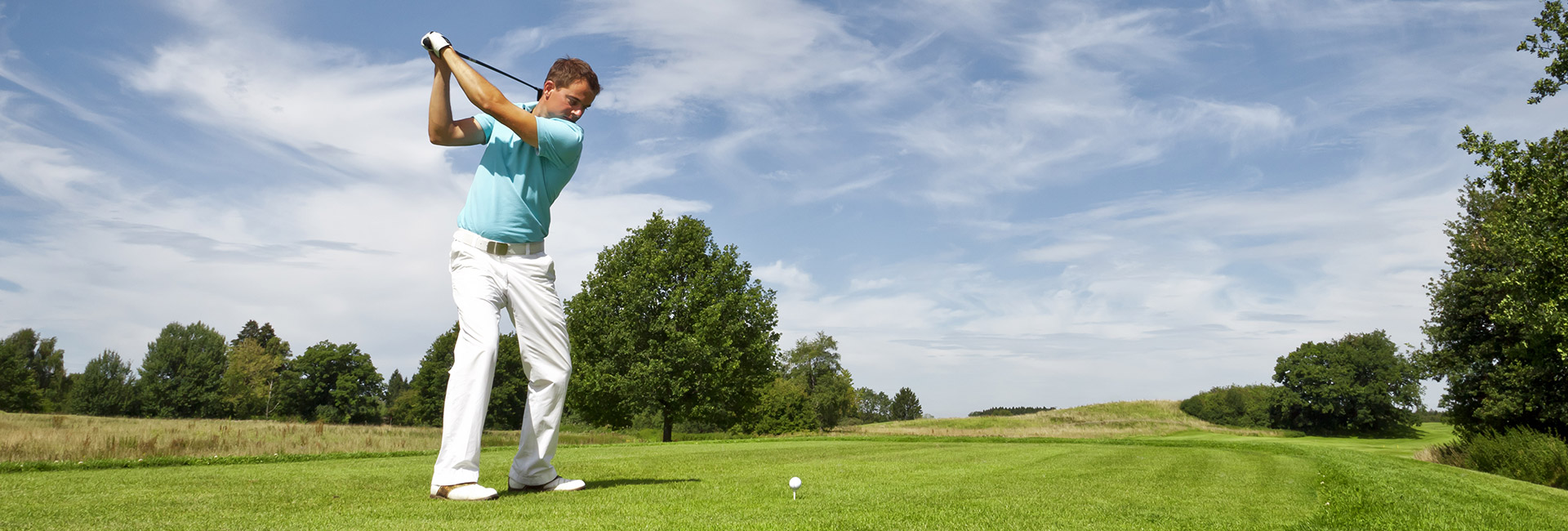Shoulder injuries in golf rank 3rd among professional golfers and 4th among amateur golfers as the most common injured region of the body accounting for up to 21% of all golfing injuries. As more baby-boomers take up the game in their leisure time, more shoulder injuries are bound to occur. It is a simple fact that we are not generally improving our overall fitness level as we age. Shoulder related issues that have been shown to be problematic include loss of flexibility, rotator cuff degeneration and acromioclavicular (AC) joint degenerative arthritis all of which can be aggravated by the repetitive nature of the golf swing.
The lead or non-dominant arm is involved the majority of the time and usually experiences pain at the end range of the swing both at the top of the backswing as well as the end of the follow through. There are a number of reasons why this can happen. Poor set up posture with a rounded mid-back putting the shoulder blades in a less than optimal position can set up a situation where two shoulder tendons and a bursa sac can get pinched or impinged under a structure called the acromion process. The acromion is part of the shoulder blade that creates a “top shelf” above the humeral head (the top end of the upper arm bone that is the “ball” in the ball and socket shoulder joint). Poor posture can also create a situation where the mid-back is not in as efficient position to rotate into the backswing limiting the turn. If a golfer wants to maximize his/her turn into the backswing but cannot get the motion from the mid-back, he/she may attempt to create an apparent further turn by raising the arms more. This in turn causes a higher likelihood of pinching those structures and initiating a downward cycle of inflammation, pain, muscle inhibition, weakness, poor coordination and further dysfunction.
Try this out while you read. Slump your back forward (if it is not already) and then try to reach both arms overhead. Get a sense for what that feels like in your shoulders and how far you can raise them. Now sit up tall and repeat. You ought to be able to go further and have less feeling of restriction at the end range. The same goes for spinal rotation. Slump again, put arms across your chest and rotate your torso back and forth getting a feel for the amount and feeling of the motion. Alternatively sit up tall and try again. Due to the rib attachments and the position of the spinal joints in the forward flexed position there is less room for those structures to move and therefore there will be less available motion to rotate.
Along with poor posture is the fact that as we age our soft tissues are getting stiffer. We will generally lose flexibility in the shoulders and particularly on the backside of the shoulder (posterior capsule). This leads to a relative forward position of our humeral head in the socket which also sets up a potential impingement situation with the repetitive stress of the golf swing. The other situation which can develop over time is acromioclavicular (AC) joint arthritis. This is the joint between the outer end of your collar bone and the shelf of your shoulder blade. It is maximally stressed when the arm is brought horizontally across your body—the definition of the lead arm function in the backswing and the trail arm function in the finish position. If the mid-back lacks mobility and the balance between shoulder joint mobility and shoulder blade stability is off, the AC joint can take a beating.
So where does the rotator cuff come into play? Yes, that’s right, it is called the “rotator cuff” and not the “rotary cup”. The rotator cuff is made up of four muscles that attach on the front and back side of the shoulder blade and wrap around the head of the humerus to hold it securely in place as it makes connection with the socket of the shoulder blade. The depth of the socket is minimal allowing for maximal mobility of the shoulder- the most mobile joint in the body. With the greater amount of mobility comes a lack of stability. The rotator cuff complex helps create internal joint stability whereas the external joint stability comes from a number of muscles attaching along the shoulder blade. The coordination and balance between the rotator cuff, the prime movers of the humerus, and the shoulder blade muscles can easily become dysfunctional. In order to keep the shoulders as injury-free as possible attention needs to be paid to each of these areas. When there becomes an imbalance with these structures injury can occur to most commonly one of the rotator cuff tendons. Over time with age and repetitive damage the tendon can rupture and require surgery. Time and repetitive use are inevitable so having your shoulders in the best possible condition is your best bet to minimize potential injury. Having an assessment of your specific limitations is an ideal way to know your risk.
Lastly, if proper transition sequence (hips->trunk->arms->club) does not occur and the upper body initiates the downswing more stress will be placed on the arms and shoulders. But that is another article.
Experts in Sports Injury Recovery
We are committed to providing effective, efficient, and compassionate care to help you return to pain-free sport. Our passion is to help every patient reach their goals on their journey to recovery and optimal performance.



